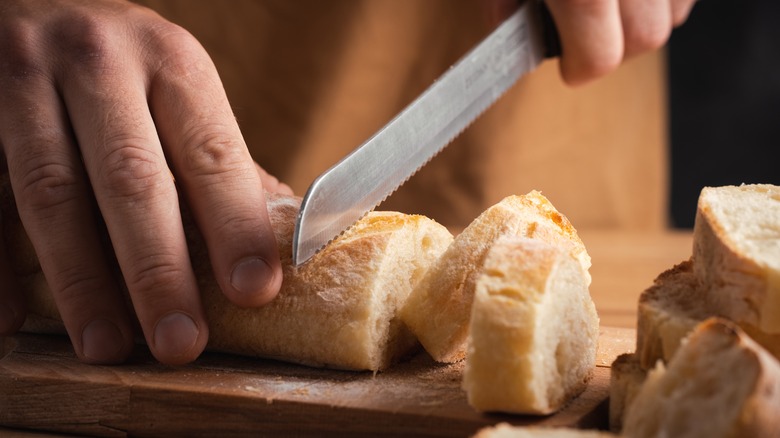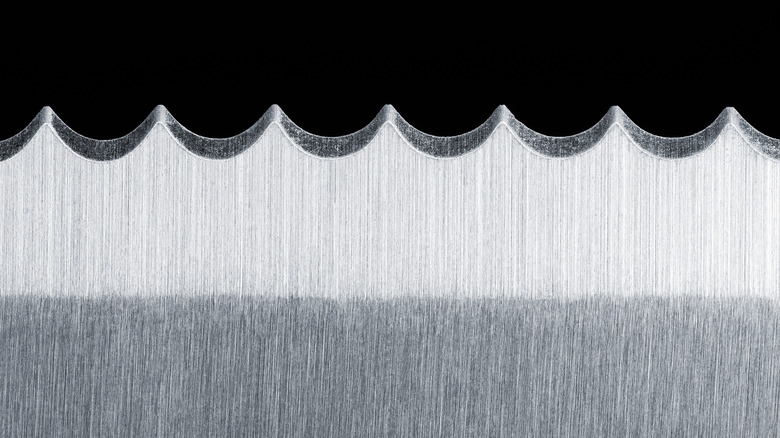The Step You Should Never Skip When Sharpening Serrated Knives
Opting for an ultra-sharp knife when it's time to cook may feel intimidating, but a dull knife is more dangerous, per Youtube chef Joshua Weissman, and can result in the blade slipping during food prep. Once the knife starts to dull happens, you don't need to purchase an entirely new knife. Just because it has dulled from standard wear and tear doesn't mean it can't be revived, you can sharpen the knives already in your kitchen ... and the task is not as daunting as it sounds.
In general, knives require sharpening every few months, though a few telltale mechanisms will let you know when it's time to break out the whetstone. You can either feel the edge of the blade with your fingertips or slice a piece of bread. If your attempt to cut the bread leaves you with lots of crumbs, it's best to pull out the knife sharpener.
From there, you'll have to act with precision. Knife sharpening requires specific techniques suited to the kind of knife you're sharpening. Due to their individual, pointed teeth, serrated knives — which are typically used for slicing bread — stand out from their cutlery counterparts. According to Misen, serrated knives require little maintenance and can actually go years without sharpening. When it's time to sharpen them, however, you'll want to remember one key step that will keep your knife in tip-top shape.
Remember to remove metal burrs for a clean, smooth sharpening
Sharpening a serrated knife seems complicated, as the serrated blades require a specialized honing rod. According to Knives and Tools, the honing rod allows you to sharpen each individual tooth of your serrated knife and can be purchased in a variety of sizes and styles.
While getting a new tool may make the sharpening process feel like an ordeal, Masterclass promises that if you sharpen your serrated knife properly, you won't have to do it again for quite some time. The key to this longevity and successful sharpening is in the final step.
After sharpening your serrated knife with your honing rod, you'll want to remove the fragments of metal that will inevitably accumulate on your knife's flat side. Known as burrs, these pieces of metal can be removed via sandpaper or by running your knife's flat end over the whetstone. Once you eliminate the burrs, you should be left with a sharp and smooth knife, ready to do some damage to that loaf on your cutting board.

